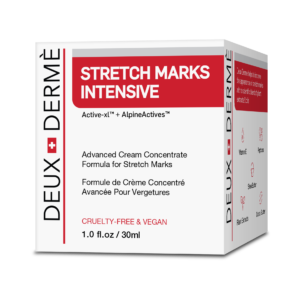Whether you try to keep them hidden under clothes or with makeup, or you consider them a badge of honor after giving birth to your children, chances are you, like most people, have stretch marks. There’s also a good chance you don’t know everything there is to know about stretch marks, why they occur, and whether it’s possible to get rid of them or prevent them altogether. Here, we separate fact from fiction when it comes to stretch marks.
Myth #1: Men don’t get stretch marks
Sorry fellows, stretch marks aren’t particular; they can wind up on women and men, young and old. Hormones related to weight gain and puberty are what make stretch marks appear. That weight gain includes muscle weight gain from lifting and working out. And many young men experience rapid growth spurts during their pubescent years, often resulting in stretch marks.
Myth #2: Thin people don’t get stretch marks
Thin people have hormones, right? So whether someone is naturally thin or they have to work out every day to keep their slim physique, they can still get stretch marks. Even if a thin person never gains weight or becomes pregnant, puberty or even hormone imbalances can make stretch marks appear.
Myth #3: Stretch marks go away when you lose weight
Nope. Stretch marks are scars so they tend to stick around. And shedding pounds is not the answer to getting rid of them; in fact, losing weight may actually make stretch marks more visible.
Myth #4: Dermabrasion or microdermabrasion can get rid of stretch marks
Microdermabrasion has mixed results in the medical community. Dr. Eric F. Bernstein, a Clinical Associate Professor at the University of Pennsylvania says, “I never use it for my patients and I do not recommend it. Using it on stretch marks will just make them worse, in my opinion.” Other treatment methods are recommended instead.
Myth #5: Stretch marks will heal over time on their own
Like any other scar, stretch marks do not simply heal on their own, no matter how much time passes. Dr. Bernstein confirms, “The damaged elastin protein fibers in the skin will not heal over time on their own.”
Myth #6: It’s not possible to prevent stretch marks
Incorrect! See the article on prevention here for tips on prevention
Myth #7: There’s no treatment for stretch marks
According to Dr. Zelickson stretch marks can be treated. “We can reduce red stretch marks, diminish white marks, improve texture and make them look better so that you can’t see them very easily.” And, there are topical creams, which also may help to diminish stretch marks as well.
Myth #8: If I have dark skin, I can’t treat my stretch marks
False! People of color have more melanin pigment, which resides in the surface of our skin in the epidermis. This can make treating a person of color potentially more difficult using laser treatment. You’ll want to find a physician who is skilled with dark-skinned patients though. Lasers are indeed still an option and there are topical creams, which also may help to diminish stretch marks as well.

